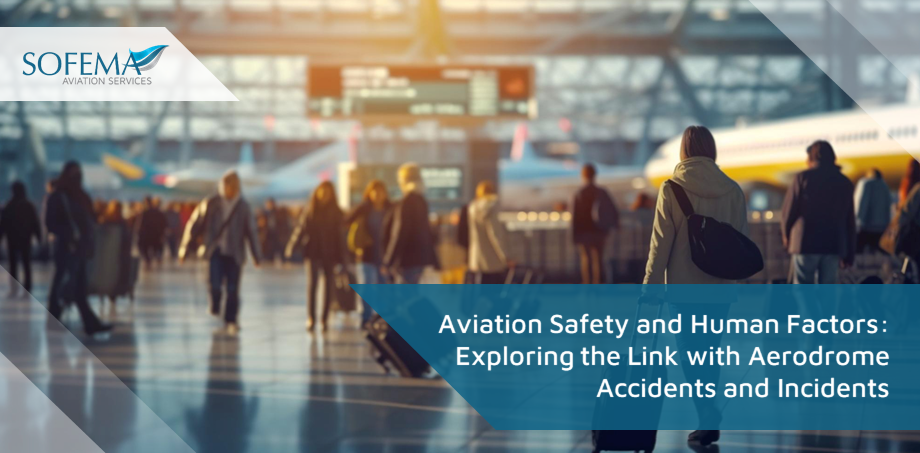Sofema Aviation Services (SAS) www.sassofia.com considers several aerodrome accidents and incidents and identifies the best practices to ensure appropriate mitigations.
Introduction
Recognizing the significant role human factors play in accidents and incidents can help in devising strategies and best practices to mitigate risks and enhance safety.
- Accidents and incidents at aerodromes can range from minor equipment damage to catastrophic events with multiple fatalities.
- The link between safety and human factors is crucial, as a significant proportion of these accidents and incidents can be attributed to human error.
Human factors play an important role in aerodrome safety. They encompass a range of issues, including:
- Cognitive Factors: Decision-making, perception, memory, and attention.
- Organizational Factors: Management decisions, organizational culture, and operational procedures.
- Environmental Factors: Weather, lighting, and noise.
- Human Error: Mistakes made by individuals, often due to fatigue, stress, or lack of training.
- Poor decisions, often due to fatigue, stress, or lack of information, can lead to accidents.
- Miscommunication between pilots, ground crew, and air traffic controllers can result in misunderstandings and operational errors.
- Losing track of one’s surroundings or the current situation can lead to errors like taxiing onto an active runway without clearance.
- Inadequate training or lack of recurrent training can result in skill degradation and mistakes.
- Tired personnel are more likely to make errors. This is especially relevant for shift workers at aerodromes.
Examples of Aerodrome Accidents and Incidents:
- Runway Incursions: An unauthorized presence on the runway, such as an aircraft, vehicle, or person, can lead to near misses or collisions. For instance, in 1991, the LAX runway incursion incident occurred when a USAir Boeing 737 collided with a SkyWest Fairchild Metroliner, resulting in numerous fatalities.
- Ground Collisions are where Aircraft either collide with each other during taxiing or with infrastructure like lighting poles or buildings.
- Fueling Incidents where Incorrect fueling procedures or equipment malfunctions can lead to fuel spills, fires, or even explosions.
- Bird Strikes can damage aircraft, especially during takeoff or landing, potentially causing engine failure or other damage.
Best Practices for Mitigation:
Establish an Incident Reporting System where any incidents, no matter how minor, are reported and analyzed to identify trends and areas for improvement.
- Ensure that all personnel, undergo regular training and assessments to maintain and update their skills.
- Implement shift schedules that consider human circadian rhythms, and encourage self-reporting of fatigue.
- Establish and enforce standardized communication protocols, especially between pilots and air traffic controllers.
- Consider the use of technology like the Airport Surface Detection Equipment (ASDE) to monitor and prevent runway incursions.
- Promote a culture where safety is prioritized, and employees feel empowered to report potential hazards or unsafe behaviours without fear of retribution.
- Implement strategies to deter birds and other wildlife from aerodromes, such as habitat modification, use of scare tactics, or even trained birds of prey.
- Conduct regular safety audits to identify potential risks and implement corrective actions.
Next Steps
Follow this link to our Library to find & download related documents for Free.
Please see the following course EASA Airports Aviation Compliance Management and Auditing – 4 Days or email team@sassofia.com for additional information
Tags:
Aerodrome, aerodrome accidents, Aerodrome Compliance, Aerodrome Incidents, Aerodrome Safety, Aerodrome Situational Awareness, Airport Incidents, Airport Management, Airport Safety, Human Factors, SAS blogs




